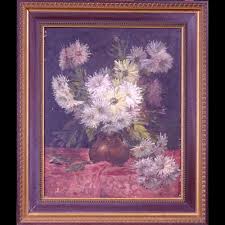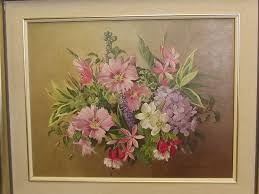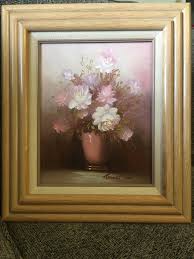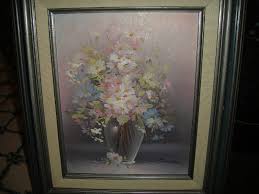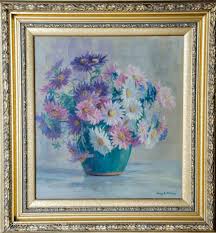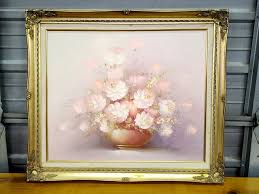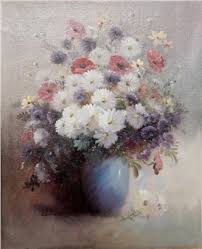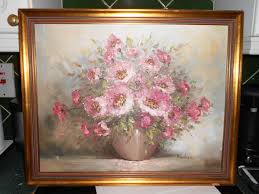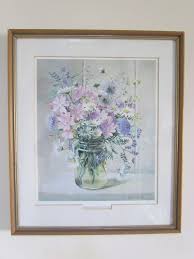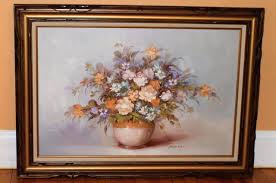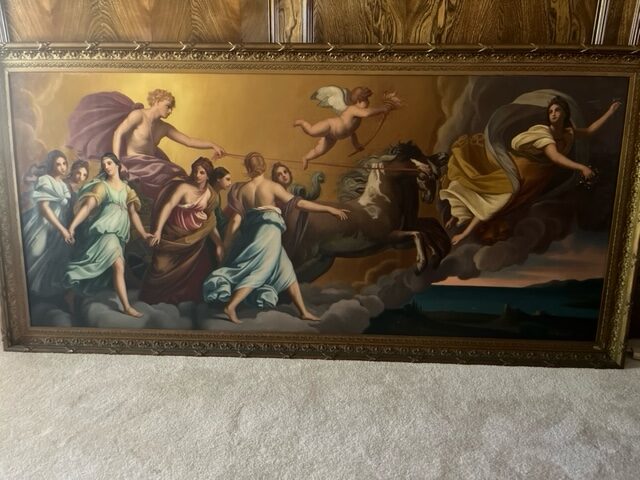This art appraisal report provides a comprehensive and objective analysis of the artwork in question, and should be based on the appraiser’s expertise and knowledge of the art market. All the information analyzed in this report is obtained exclusively from the requester.
Understanding the value of your pieces is important to you and will help with any future decisions. This report provides an appraisal estimate for each artwork, using US dollars as a world reserve currency; it does not aim at encouraging anyone to sell their art but rather provides valuable information on what steps should be taken if someone else wanted to.
Detailed description of the artwork, including its medium, dimensions, and condition.
Checking Originality: Identification with Artificial Intelligence Test
In the search for a match, Image Search uses AI to look through databases of images and attempt to find ones that are similar. It can do this by using various algorithms like pattern recognition or machine learning. Some results may show as “matches” if there is actually something in common between two photos, but others will remain unknown since they rely more on chance than anything else. To run this test, I used a front picture to try to find similar images uploaded on the internet.
The results of the automatic recognition are not conclusive. If a match is found, it will be shown below:
What specific information can we obtain from this test?
Our findings demonstrate this is a unique work of art; the comparison images in our gallery could not be matched with it. Even though there is always some uncertainty, we’ve found that this method gives accurate results 90% of the time, so it’s a good way to start figuring out if something is real. To completely identify the artwork, I continue to the next test.
Age estimation
When trying to determine the age of an artwork, one of the first things to look at is the frame. The style of the frame, as well as the type of artwork and color palette, can give clues as to when it was created. For example, a piece from the Baroque period might have a gilded frame with a complicated design, while a piece from the Renaissance might have a simple wood frame. One way to date a painting is by looking at the frame construction. A frame made with modern metallic parts like flat-head nails, staples, or Phillips-head screws is likely from the 20th century. Older frames will have parts made of irregularly cut wood and metal that has been forged by hand. In some cases, you can see the absence of metallic parts. This is just one example of how the frame is put together and can be used to date a painting.
Based on the color palette and frame construction, I concluded that the painting was created in the mid- to late-20th century.
Condition of the artwork
This painting is in excellent condition, with no visible signs of wear or damage. The colors are still vibrant, and the paint has aged gracefully over time. No apparent repairs have been made to the work, giving it a unique patina that contributes to its overall charm.
Artist’s name, biographical information, artwork’s provenance (history of ownership) and exhibition history.
I study and research the signature of artwork to see if it matches any known signatures. At this step, I also inspect the painting’s front and back pictures, to find an artist’s name or other identifying features like stickers that may help me identify who has made this work. If there is any, provenance is also seen as an important variable because it helps figure out who the artist is.

A close picture of the signature is included in this report.
I can read the signature as:
Robert Cox
At this point, I can use the signature and try to find the artist’s name in a database of known-listed artists. Basically, it is a database with information about the names, surnames, origins, and biographies of the most well-known artists.
I found that the artist who painted this artwork is a listed and well known artist
Robert Cox
(1934-2001)
biography of artist Robert Cox (1934-2001)
Robert Cox (1934-2001) was an American artist who is best known for his abstract expressionist paintings. Born in Dallas, Texas in 1934, Cox studied at the University of Texas at Austin and the Art Students League of New York. His works are characterized by bold brush strokes, bright colors, and a unique blend of abstract and figurative elements. His work has been exhibited in museums around the world, including the Museum of Modern Art in New York, the Smithsonian American Art Museum in Washington D.C., and the Tate Modern in London. Throughout his career, Cox continued to explore the possibilities of abstraction and figuration, creating a body of work that remains highly influential today. This biography will explore the life and works of Robert Cox and the impact he had on the art world.
Detailed analysis of the artwork’s style, subject matter, and significance within the artist’s oeuvre and the broader art world.
I can check if the style and type of painting match those of the artist referenced.
Robert Cox was an influential artist in the 20th century, and his work is still appreciated today. His art was characterized by a unique style that blended elements of abstraction and realism. This painting perfectly matches the style of Robert Cox, with its vibrant use of color and its bold brushstrokes. It is a beautiful piece that captures the essence of Cox’s art. The painting is composed of a variety of shapes, lines, and colors that come together to create a cohesive composition. The painting is a perfect example of the artist’s signature style and his ability to combine realism and abstraction into a single work of art. It is a stunning reminder of the legacy of Robert Cox and his impact on the art world.
Comparable sales information, including prices realized at recent auctions or private sales of similar works by the artist or in the same medium.
I used this data to provide an up-to-date estimate of the fair market value for the artwork. This is important as it can be used in insurance, estate planning and general art market analysis. It also offers a valuable insight into how the valuation of the artwork may have changed due to environmental or economic factors.
The auction prices provided an accurate and reliable measure of the current market value of the artwork, as they are based on real transactions between buyers and sellers in the art market. As such, it is a strong indicator of what someone might expect to pay for this piece in the near future.
By considering auction results from the last 6 months, I was able to accurately determine the current fair market value of the artwork. This provides a comprehensive view of how the value has changed over time and gives an insight into any potential areas of appreciation or depreciation in its price. In addition, it allows me to adjust my valuation as new auction prices become available.
Conclusion
Investing in art can be an appealing and potentially lucrative form of investment. Art investments can be divided into two main categories – tangible, physical investments and intangible, financial investments. Physical investments in art include the acquisition of pieces of art, either through auction, direct purchase from galleries or through private sales. Intangible investments in art include the purchase of shares in art-related funds or the purchase of derivatives such as financial instruments that are based on the performance of the art market. Investing in art can be a wise long-term decision, as the value of an artwork may appreciate over time. Moreover, many investors view art as a safe haven, as it is not subject to the same fluctuations in value as stocks and other more traditional investments. Additionally
Final Appraisal Value ($)
—$
Appraisal Report made by:
Andrés Gómez
BSc, MSc, Expert Art Appraiser
10+ years of experience in Online Art Appraisals
100k+ Customers Served
Antique Store Owner
You can check my portofolio of past appraisals here:
https://www.appraisily.com/andres-portofolio/

Relevant photographs or supporting documentation, such as condition reports or expert opinions
A detailed summary of the appraisal process and the appraiser’s qualifications.
Mark to market art appraisal is an important tool for assessing the current value of a piece of artwork. This type of valuation requires an appraiser to take into account a variety of factors such as market conditions, the condition and age of the artwork, and the artist’s reputation. By taking all these elements into consideration, mark to market art appraisal provides an accurate assessment of a piece of artwork’s current market value.
Mark to market art appraisal considers the artist’s reputation, which is based on their track record in gallery and museum shows, awards, and other accomplishments. Appraisers use this information to help determine whether a piece is likely to increase or decrease in value over time. Additionally, they will inspect the condition of the artwork and note any signs of wear or damage that might affect its future resale value.
Appraisers also take into account market conditions when performing mark to market art appraisals. They research current trends in the art world as well as what similar works have sold for recently in order to provide an estimate of a piece’s worth at that given moment in time. By considering all of these factors, mark to market art appraisal is able to give a reliable indication of the current value of a work. This type of valuation can also be used when buying or selling artwork in order to ensure fair prices are paid and received.
Overall, mark to market art appraisal is an important tool for assessing the true value of a piece of artwork so that buyers, sellers, and appraisers alike can make informed decisions regarding its worth. It takes into account multiple aspects in order to provide an accurate assessment at any given moment on the current market value of a work. With this information they can make sure they’re getting what they pay for and that their sales are appropriately priced according to the current market conditions.
In the case of insurance replacement appraisals, mark to market art appraisals can be used to accurately estimate the cost of replacing a lost or damaged artwork. The current value determined by the appraisal is then factored into the policyholder’s reimbursement amount from their insurer. This way they can rest assured that they will receive an appropriate sum for any artwork that needs to be replaced due to accidental damage or theft. Additionally, this type of valuation helps insurers ensure they are not being overcharged in cases where artwork needs to be replaced as part of a claim settlement.
The appraisal process is a careful evaluation of the item or items in question. It involves researching and analyzing the information provided by the requester in order to provide an accurate estimate of its value. The appraiser takes into account factors such as condition, rarity, demand, and market prices. Photographs and detailed descriptions are especially important when providing an appraisal, since they help the appraiser identify any potential flaws or defects that could affect the item’s worth. By utilizing all available resources, an appraisal can be conducted quickly and efficiently with a high degree of accuracy.
A statement of the appraiser’s liability and any potential conflicts of interest.
A qualified art appraisal is a written assessment of the value of a piece of art by a person who is qualified to do so. This person has specialized knowledge and expertise in the field of art appraisal, and may have completed certain educational and professional requirements to be considered qualified. An art appraiser will typically have experience in researching and evaluating art, as well as knowledge of the art market and current market trends. The purpose of an art appraisal is to provide a professional and unbiased opinion of the value of a piece of art for a variety of reasons, such as for insurance purposes, tax planning, or to help determine a fair price for a sale or purchase.
We strive to provide our clients with the most accurate and unbiased appraisal reports possible. We do not use a percentage-based fee for appraisals, but instead opt for a flat rate fixed fee structure. This ensures that there is no conflict of interest between the Art Appraiser and the final report value – all that matters is providing an honest and truthful appraisal of your artwork or collection. To ensure accuracy, all appraisals are conducted according to USPAP standards and guidelines as set forth by The Appraisal Foundation.
How to sell this artwork.
We have a structured guide to help you sell your artwork, you can find it here.

